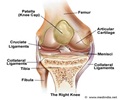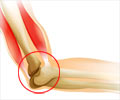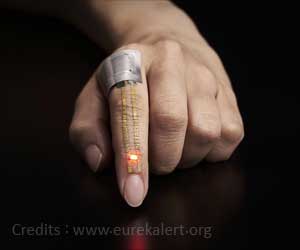Clinicians attending to patients suffering from tennis elbow ask them to alter the grip size of their racket to ease muscle fatigue
Clinicians attending to patients suffering from tennis elbow ask them to alter the grip size of their racket to ease muscle fatigue. A new study evaluating the muscle firing patterns in the forearm demonstrates that grip size has no bearing on the development of tendonitis.
Researchers apparently have "gotten a grip" on the relationship between the development of tennis elbow (tendonitis) and the size of the grip on the racket a player uses.A grip that is either too big or too small for the player's hand is not a factor in whether or not a player may develop tennis elbow, according to a study published in the December issue of The American Journal of Sports Medicine. "An optimal grip size may influence the force with which a player hits the ball, but variations in grip size are unlikely to be contributing factors in overuse injuries such as tennis elbow," concludes George F. Hatch III, MD, currently of the Department of Orthopaedic Surgery, University of Southern California Keck School of Medicine, Los Angeles, and colleagues. (Dr. Hatch conducted the study while in training at the Kerlan-Jobe Orthopaedic Clinic in Los Angeles.)
"Clinicians who treat patients with tennis elbow often tell them to try a different size grip in order to alleviate muscle fatigue," says Dr. Hatch. "Our study demonstrates that those recommendations have no scientific basis. Therefore, it is reasonable to recommend whatever grip size feels most comfortable for them."
Tennis elbow (lateral epicondylitis) is the most common upper extremity complaint among recreational players, accounting for 75% to 85% of elbow injuries. Researchers believe it results from repetitive impacts between the ball and racket coupled with poor wrist stability especially during the backhand swing. The backhand stroke seems to be the culprit because it results in overexertion and micro-tearing within two primary muscles inside the forearm.
Hatch and coauthors at Kerlan-Jobe Orthopaedic Clinic studied 16 NCAA Division I and II tennis players (10 men, 6 women) with no prior history of elbow problems. Twelve players were right-handed; four left-handed. All players were proficient at using a one-handed backhand. Players' "recommended" grip size was determined using an industry standard: measuring the distance from the bottom lengthwise crease in the palm to the tip of the ring finger with a ruler.
The researchers inserted electrodes into five different muscles in each player's dominant arm to measure the firing pattern of their muscles (electromyogram, EMG). After a warm-up period, players then performed three single-handed backhand strokes using identical model rackets with three different grip sizes: the "recommended" grip size, a "small" grip size (1/4 inch smaller than recommended), and a "large" grip size (1/4 inch larger than recommended). One-quarter inch size variations were chosen because most commercially available adult-sized rackets have grip sizes ranging from 4 inches to 4 5/8 inches. A ball machine set at a constant speed and angle provided consistent ball delivery. Each player's strokes were captured on high speed video which was then synchronized with the corresponding EMG.
Advertisement
"Based on our data, we recommend recreational tennis players use the currently accepted grip size measurement technique as a starting point in when picking a grip size," says Dr. Hatch. "However, the player should feel free to increase or decrease the size of the grip based upon what feels most comfortable. Previous studies have shown that improper form is one of the biggest risk factors for the development of tendonitis."
Advertisement
Source-Eurekalert
SAV










